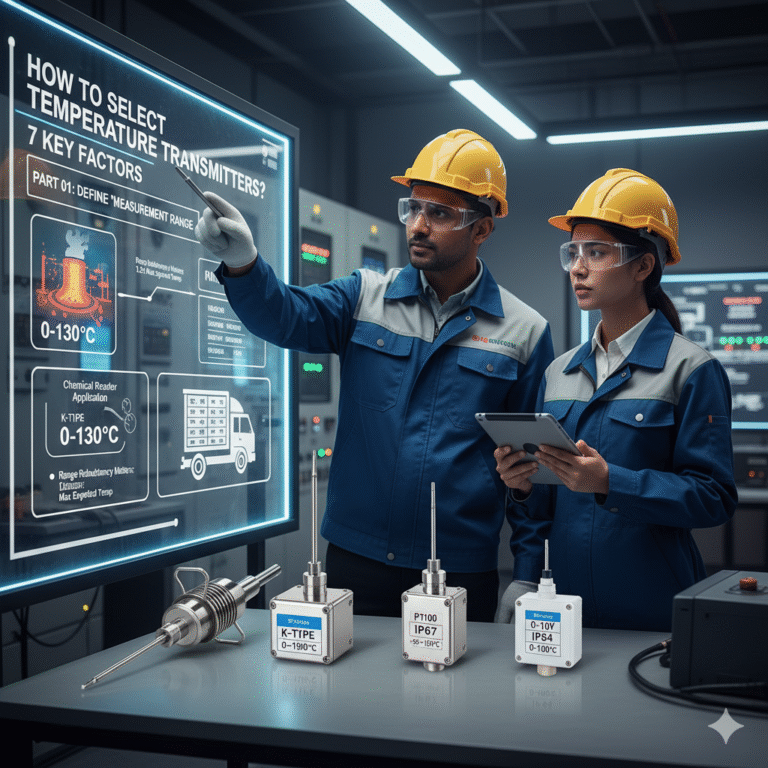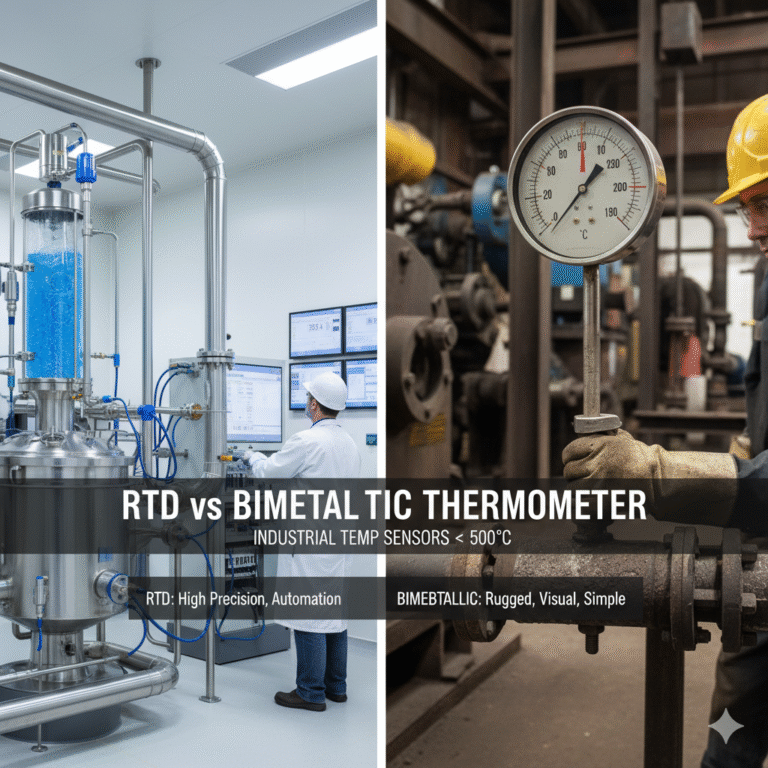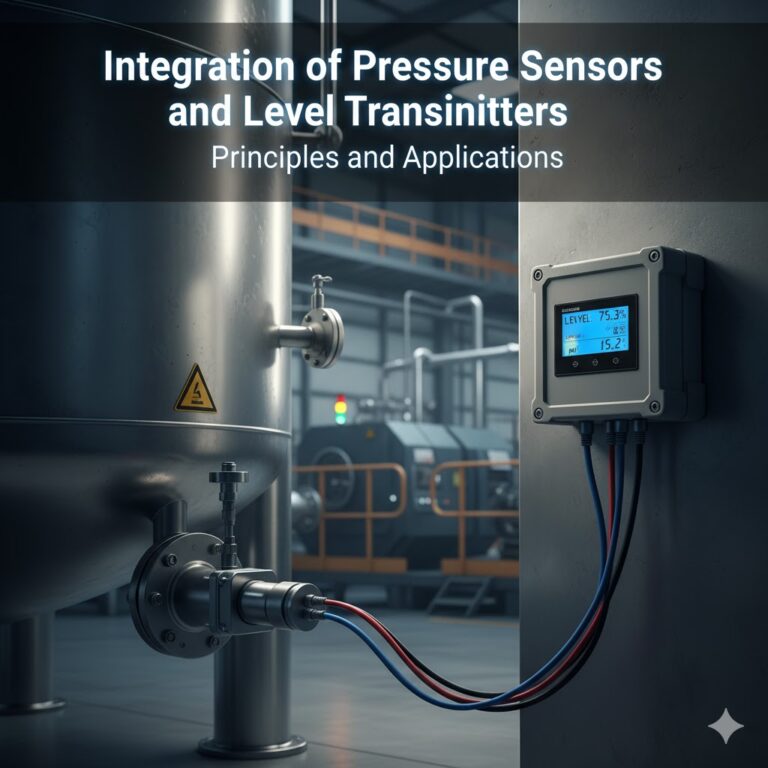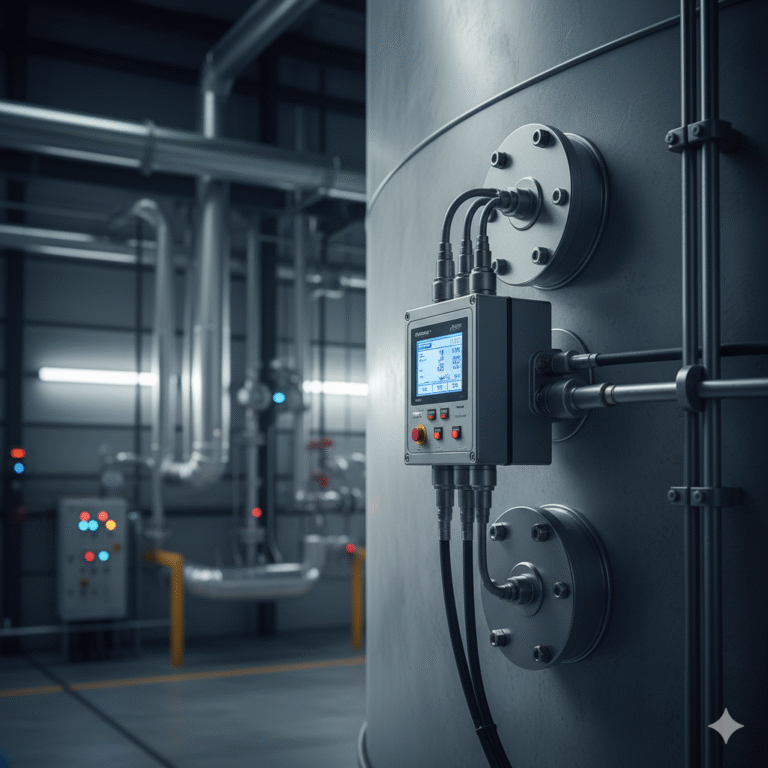How Pressure & Temperature Transmitters Win the Battle in Fine Chemical Production**
In the world of fine chemicals and petroleum additives, every drop of product represents the highest level of industrial precision. Here, “almost correct” does not exist—even the slightest deviation in temperature, pressure or concentration can scrap an entire batch, damage equipment, or trigger serious safety incidents.
In these demanding environments, pressure and temperature transmitters—a pair of instruments often overlooked—play a decisive role. Working together, they form the most critical sensory system for process control and plant safety.
This article takes you deep into how this combination becomes the hidden champion behind quality, stability, and operational excellence.

1. The Harsh Battleground:
Why These Instruments Are the “Sensory Nerves” of Fine Chemical Processes**
Fine chemical and additive production frequently involves:
High temperature and high pressure
Corrosive, viscous, toxic or flammable media
Highly sensitive reactions
Strict regulatory and safety requirements
Chemical reactions such as polymerization, synthesis, and catalysis demand extremely tight control. A minor fluctuation in temperature or pressure can alter reaction pathways, impact molecular weight distribution, or even push the reaction out of control.
In such environments:
Relying on a single temperature or pressure measurement is insufficient.
Only the combined monitoring of both parameters can create a complete, accurate picture of process conditions.
This combination becomes the backbone of DCS automation and SIS (Safety Instrumented Systems), acting as the plant’s most reliable “sensory nerves.”

2. Where the Dual System Shines:
Critical Applications Across the Plant**
1) Reactors — the “Brain” of the Process and the First Line of Defense
The reactor is the most demanding measurement location.
Process Control:
Precise temperature and pressure control ensures the reaction proceeds at the correct rate, determining:
Conversion efficiency
Product consistency
Polymer chain distribution
Reaction selectivity
Safety Protection:
When any abnormal rise in temperature or pressure occurs, the dual-transmitter setup sends instant warnings to trigger:
Emergency cooling
Venting
Shutdown interlocks
This prevents runaway reactions and ensures plant safety.
2) Distillation Columns — the Gatekeepers of Product Purity
For fine chemical separation:
The temperature-pressure relationship at the reboiler and condenser determines separation performance.
Multi-point measurement allows for:
Higher purity
Better energy efficiency
Optimized heat integration
Accurate temperature and pressure readings are essential for yield improvement and cost reduction.
3) Storage Tanks & Pipelines — Continuous Surveillance for Safety
Storage Tanks:
Real-time monitoring prevents both overpressure and vacuum collapse, protecting tank integrity.
Pipelines:
Pressure drop helps diagnose blockages in viscous materials.
Unusual pressure-flow combinations can indicate leaks at an early stage.
The dual measurement system ensures safe operation across the entire plant.

3. The Power of Integration:
Why 1 + 1 > 2
1) Accurate Density Compensation
For steam flow, gas flow, or liquid level in pressurized tanks:
Temperature changes density
Pressure changes density
Accurate measurement requires both parameters
By using real-time density correction, the system delivers far more accurate and stable results.
2) Intelligent Process Diagnostics
The system performs cross-checking like a seasoned operator:
In boiling conditions, temperature and pressure must match vapor–liquid equilibrium.
When one reading deviates while the other remains normal, the system can detect:
Sensor drift
Calibration issues
Instrument blockage
This supports predictive maintenance and improves reliability.
3) Foundation for Advanced Process Control (APC)
Modern APC algorithms require multi-variable inputs.
The temperature–pressure pair enables:
Predictive modeling
Optimized valve coordination
Tighter control loops
Lower energy consumption
It is the foundation for modern smart manufacturing.
4) One-Port Integration: A Growing Industry Trend
More plants are adopting integrated temperature–pressure assemblies, offering:
Fewer process penetrations
Lower leakage risk
Compact installation in tight spaces
Simplified maintenance
This is especially advantageous in reactors and high-pressure systems.

4. How to Choose the Right Instruments:
Golden Rules for Selection and Installation**
Choosing the right transmitters is vital for stability and safety.
1) Material Compatibility
For corrosive, sticky, or toxic media:
316L stainless steel
Hastelloy C276
Tantalum
PTFE-lined wetted parts
Flush diaphragm pressure transmitters for viscous applications
2) Accuracy & Long-Term Stability
High-value chemical production requires high accuracy, excellent repeatability, and minimal drift.
3) Safety Certifications
In hazardous areas, compliance with:
Ex d IIC T6 Gb
IECEx / ATEX
is mandatory.
4) Smart Communication
Transmitters supporting:
HART
Profibus PA
Modbus
Foundation Fieldbus
allow remote configuration, diagnostics, and integration with predictive maintenance strategies.

Conclusion
In today’s fine chemical and petroleum additive industries, pressure and temperature transmitters do far more than conventional measurement.
They have become:
Eyes of the process
Shields of safety
Engines of efficiency
Investing in a reliable, accurate, and intelligently integrated measurement solution is one of the most effective ways to strengthen:
Production stability
Safety performance
Product quality
Overall competitiveness
